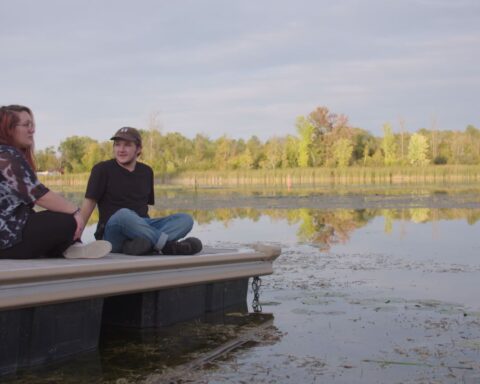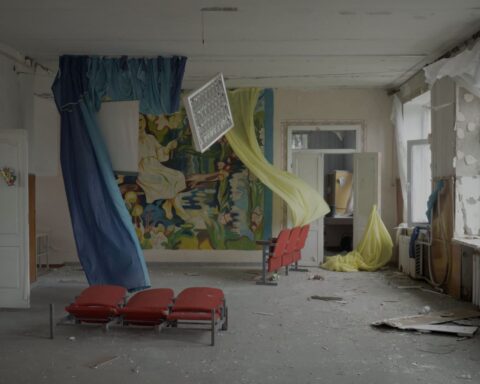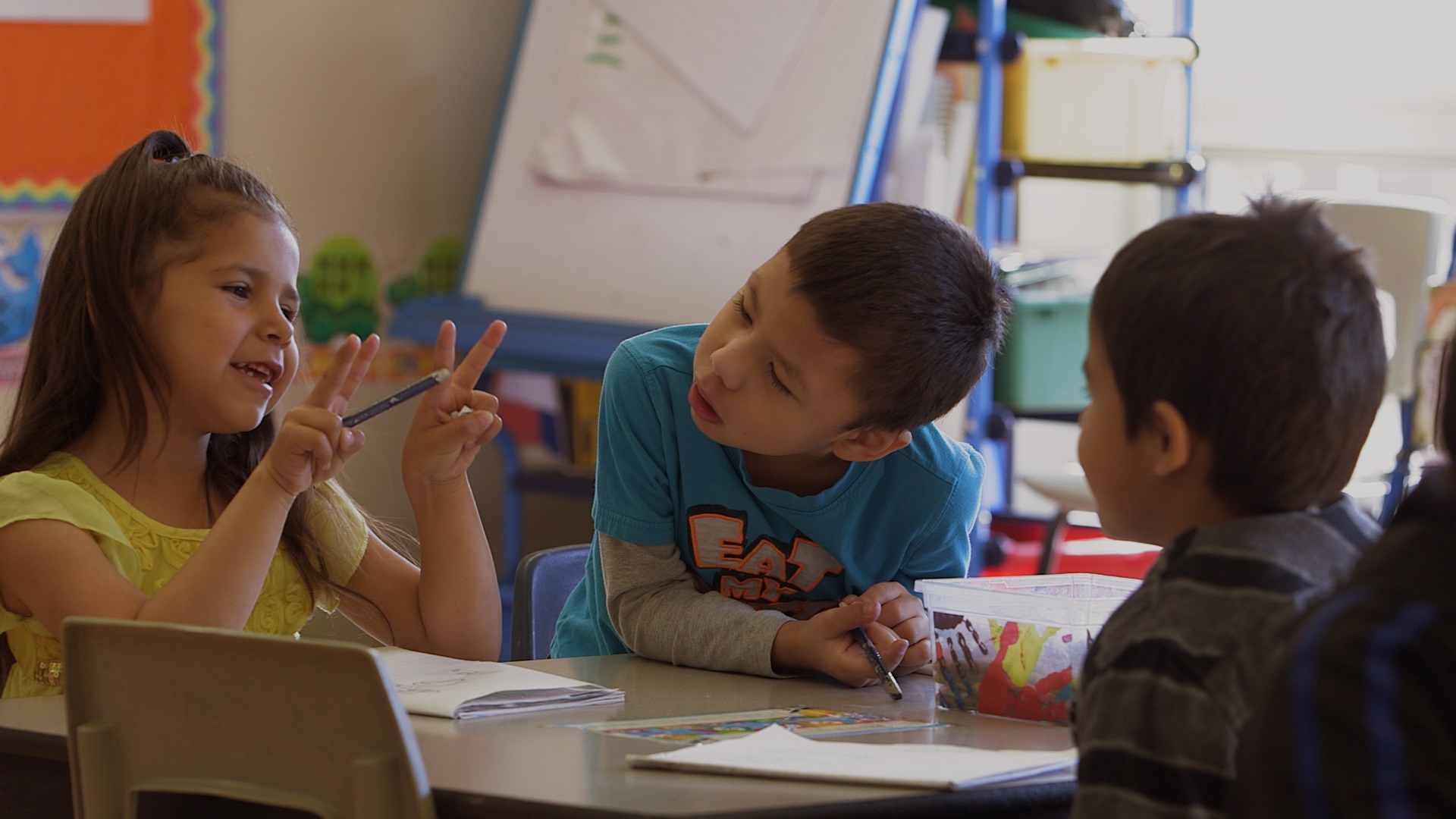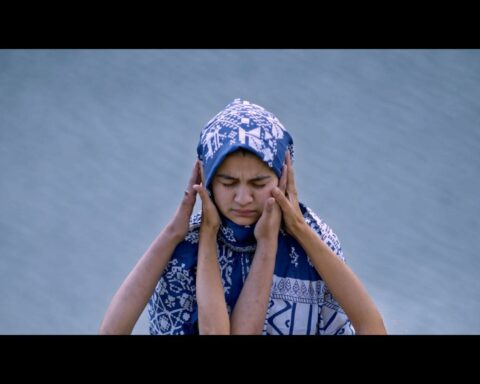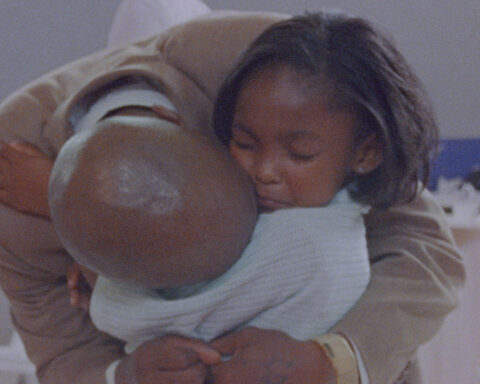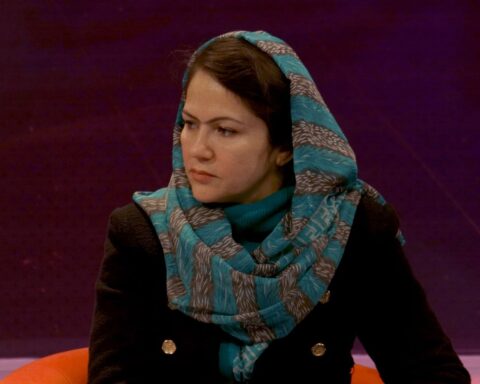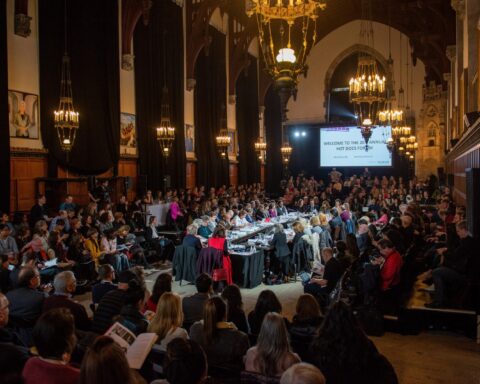There is a House Here
(Canada, 105 min)
Dir. Alan Zweig
Programme: TIFF Docs (World Premiere)
What are the roles and responsibilities of artists who want to explore stories of communities outside their own? This question is a hot topic in the cultural milieu, as debates wage concerning who can or should tell such stories. In the midst of these editorials, radio rants, Twitter wars, toxic Facebook threads, hot takes, and often-justified outrage, an important question often gets lost in the shuffle: if allies want to help, what is the appropriate course of action?
Along comes There Is a House Here from director Alan Zweig, one of Canada’s pre-eminent documentary filmmakers. Moving away from his back-to-back sessions with Steve Fonyo in Hurt and Hope, his new subject—and perhaps his toughest one yet—is the Inuit. The film sees Zweig in top form as he uses his gift for gab to relate to the Inuit and seek permission to share their concerns with fellow Canadians.
There is a House Here film brings Zweig to Nunavut after several years of phone calls with his friend Tatanniq (Lucie) Idlout, an Inuk musician who returned home after living in Toronto. Zweig’s reason for going up north stems from a comment Lucie made during one of their calls in which she likened living up north to existing under Third World conditions. Shocked and unsettled by news that the Canada he envisions differs from the one Lucie sees, Zweig takes his camera on an expedition to ask two central questions: What are the issues facing Inuit communities and what can other Canadians do to help?
There is a House Here features numerous instances of friction, thanks to Zweig’s outsider status. Several of the Inuit decline an interview, while many agree to speak with some hesitation. The first few interviews in the film really don’t go well, including one that sees Zweig asked to leave when he candidly admits he doesn’t believe in the Devil or the man upstairs. There are many reasons to be wary of this qallunaat with a camera, since the legacy of documentary filmmaking basically rests on the exploitation of the Inuit going back to Robert Flaherty and his fictional friend Nanook (whose real name was Allakariallak).
There is a difference, of course, between Nanook of the North and There is a House Here. This film favours the true narratives and experiences of the residents in the communities, whom Zweig and Lucie visit. The Inuit tell their tales in their own words and with the ever-present Zweig serving only to ask questions, warm the conversations through humour, and, when necessary, make observations that prompt the interviewees to elaborate upon their answers and articulate northern living in all its complexities.
Zweig has mastered the art of being present in his films without overwhelming the subjects and this skill once again benefits his inquiry. His knack for self-deprecating humour acknowledges the media’s shoddy coverage of stories from the north as well as the willful ignorance of Canadians to address problems in their own country. There is a House Here might be a film by a white guy about the Inuit community, but Zweig is not in Nunavut to tell his own story. He openly professes his ignorance, more than once, and his questions far outweigh his answers.
Zweig owes a fair bit of credit to Lucie Idlout, who serves as his semi-reluctant guide during these trips to Nunavut. Her presence vouches for Zweig as an ally with good intentions, and she’s in the room for most of the interviews, serving as a translator, observer, or, in some cases, a compassionate hand for subjects to hold while the painful past of some interviewees is excavated. Zweig’s interviews are often powerfully cathartic, and she cries alongside her neighbours as they bear their scars for all to see.
Most of the stories Zweig encounters expose the hardships that the Inuit have experienced: residential schools and their lasting traumas; the lack of affordable housing and the erosion of the Inuit languages and cultural practices like hunting and living off the land. Education problems, such as temporary teachers coming up from the south and educating kids in a mix of English and broken Inuktitut, rob children of their traditional language, forcing them to use the colonial tongue. Accounts of attempted and successful suicides, lives ruined by alcoholism, children shuffled from family to family, and families crammed into homes like sardines in a can are just some of the issues the film raises as Zweig listens to the elders with open ears.
There is, however, one pivotal conclusion and it comes from Lucie Idlout during the film’s final interview. Restless after being the go-between during Zweig’s three visits to Nunavut, she becomes frustrated when it comes time to answer questions about her own experiences. Zweig points out that Idlout often describes herself as broken, yet she won’t elaborate on the roots of her perceived alcoholism. It’s at this point that Idlout challenges Zweig’s approach and turns a happy moment into a heated one by rejecting his line of questioning, which focuses on pain and suffering. The film finds a great and memorable character in Lucie Idlout: she’s a strong, complex, and fallible character—feisty and vulnerable—and her desire to help others heal while struggling to take care of herself reveals the complexity of a community that has endured decades of trauma and desperately craves room to breathe.
In many if not all cases, though, the resilience of the community furtively enters the film no matter how much Zweig asks people about their problems. The Inuit consistently add observations of hope and optimism into the stories and insist that, despite the hardships, the negative depiction of their communities in southern media fail to offer the full picture. There is a House Here balances its portrait by giving due time to the elements of the Inuit culture that thrive. A seal hunt is an act of cultural resistance—and the film builds to a community feast in which the cleansing of pelts and sharing of meat is shown. Quite correctly, Zweig opts to show the feast, allowing the audience to make its own conclusions. It’s a refreshing note of optimism, particularly for all the children who find so much joy in the hunt.




